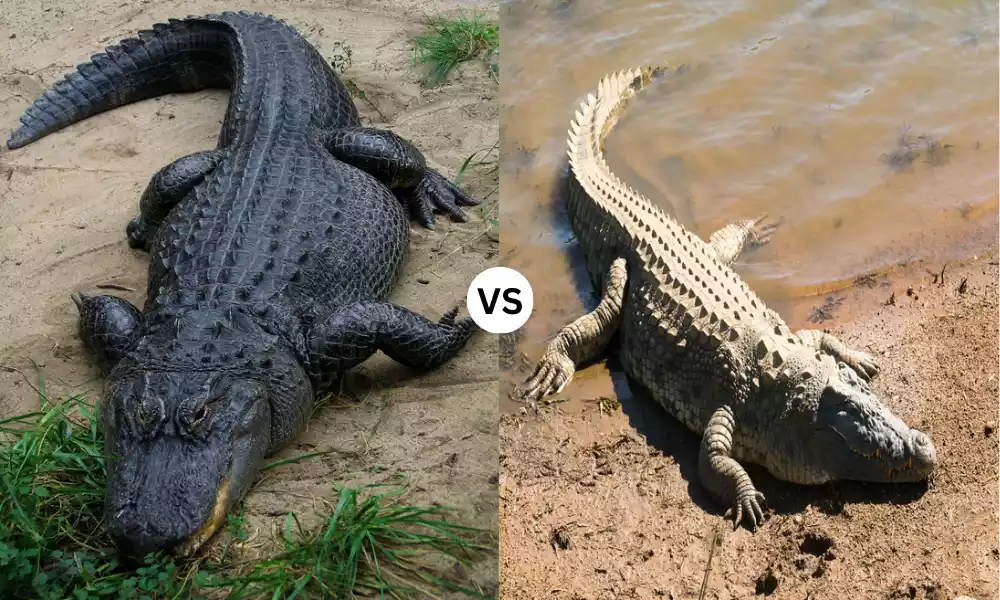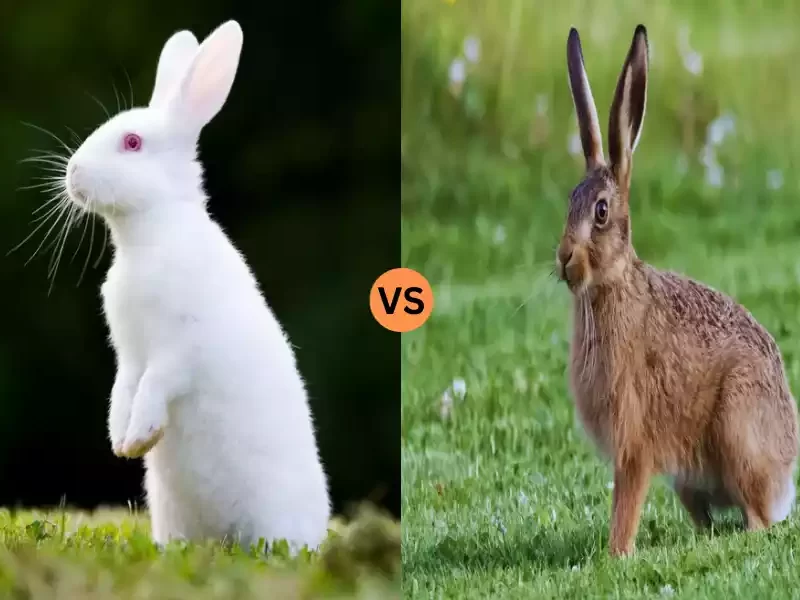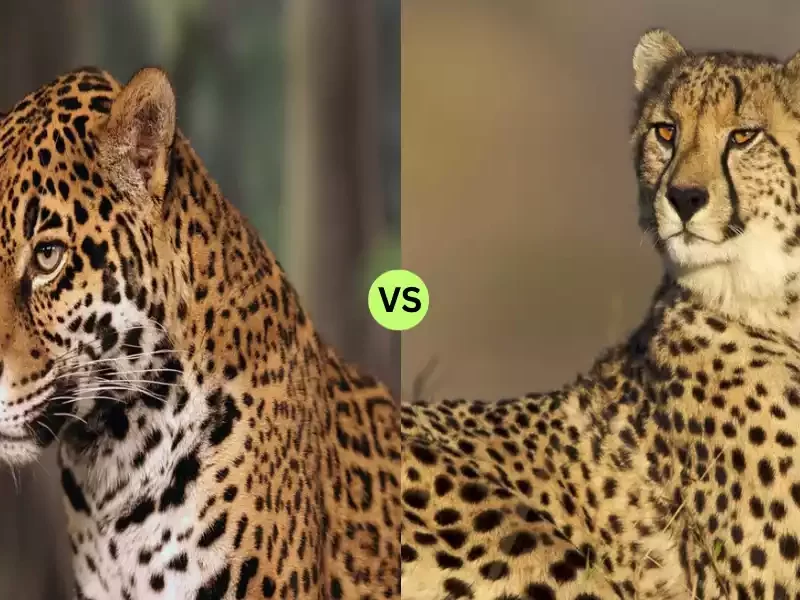Alligators and crocodiles are large reptiles famous for their powerful jaws, sharp teeth, and thick scales. Alligators, primarily found in the United States and China, have a wider, U-shaped snout and are generally less aggressive than crocodiles.
Crocodiles, on the other hand, have a more pointed, V-shaped snout and are found in Africa, Australia, Southeast Asia, and the Americas.
Both are semi-aquatic ambush predators, spending significant time in water but also being capable on land. They are part of the Crocodylia order, which also includes caimans and gharials.
Despite their similarities, alligators and crocodiles belong to different families: Alligatoridae and Crocodylidae, respectively. Their prehistoric appearance and behavior continue to fascinate and intimidate humans.
Definition of Alligator
An alligator is a large reptile belonging to the family Alligatoridae. There are two species of alligators: the American alligator (Alligator mississippiensis), primarily found in the southeastern United States, and the Chinese alligator (Alligator sinensis), found in the Yangtze River basin in China.
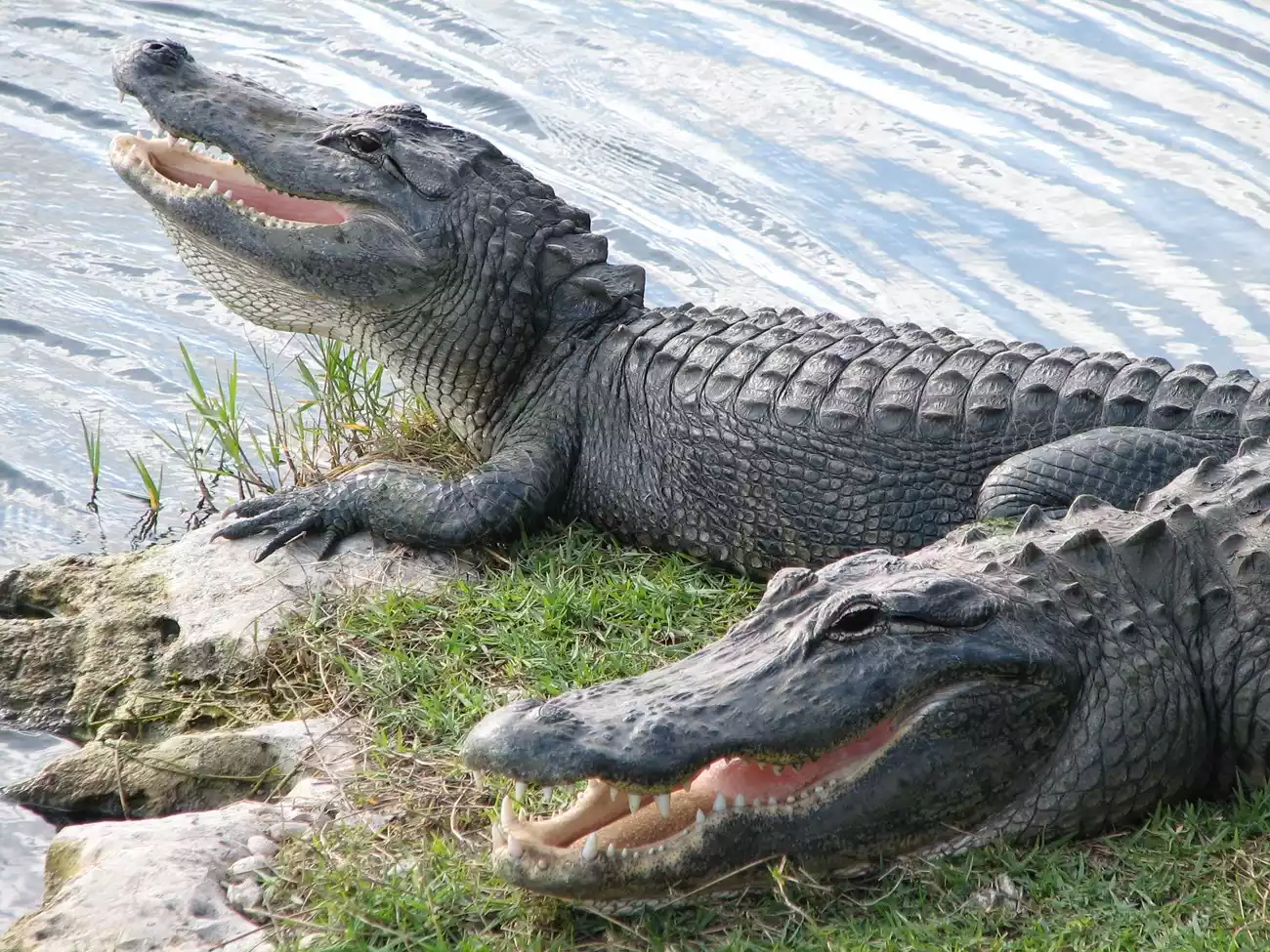
Alligators are characterized by their broad, U-shaped snouts, powerful tails, and thick, armored skin with bony plates called osteoderms. They are typically darker in color, often nearly black, but can vary.
Alligators are semi-aquatic animals, living in a range of freshwater environments such as rivers, lakes, swamps, and marshes. They are carnivorous, feeding on a diet that includes fish, amphibians, reptiles, birds, and mammals.
Alligators are known for their impressive jaw strength and are often seen basking on the banks of water bodies. They play a crucial role in their ecosystem as apex predators and are considered a keystone species.
Definition of Crocodile
A crocodile is a large amphibious reptile belonging to the family Crocodylidae, part of the order Crocodylia. Crocodiles are known for their long, narrow, V-shaped snouts, powerful tails, and formidable jaws filled with sharp teeth.
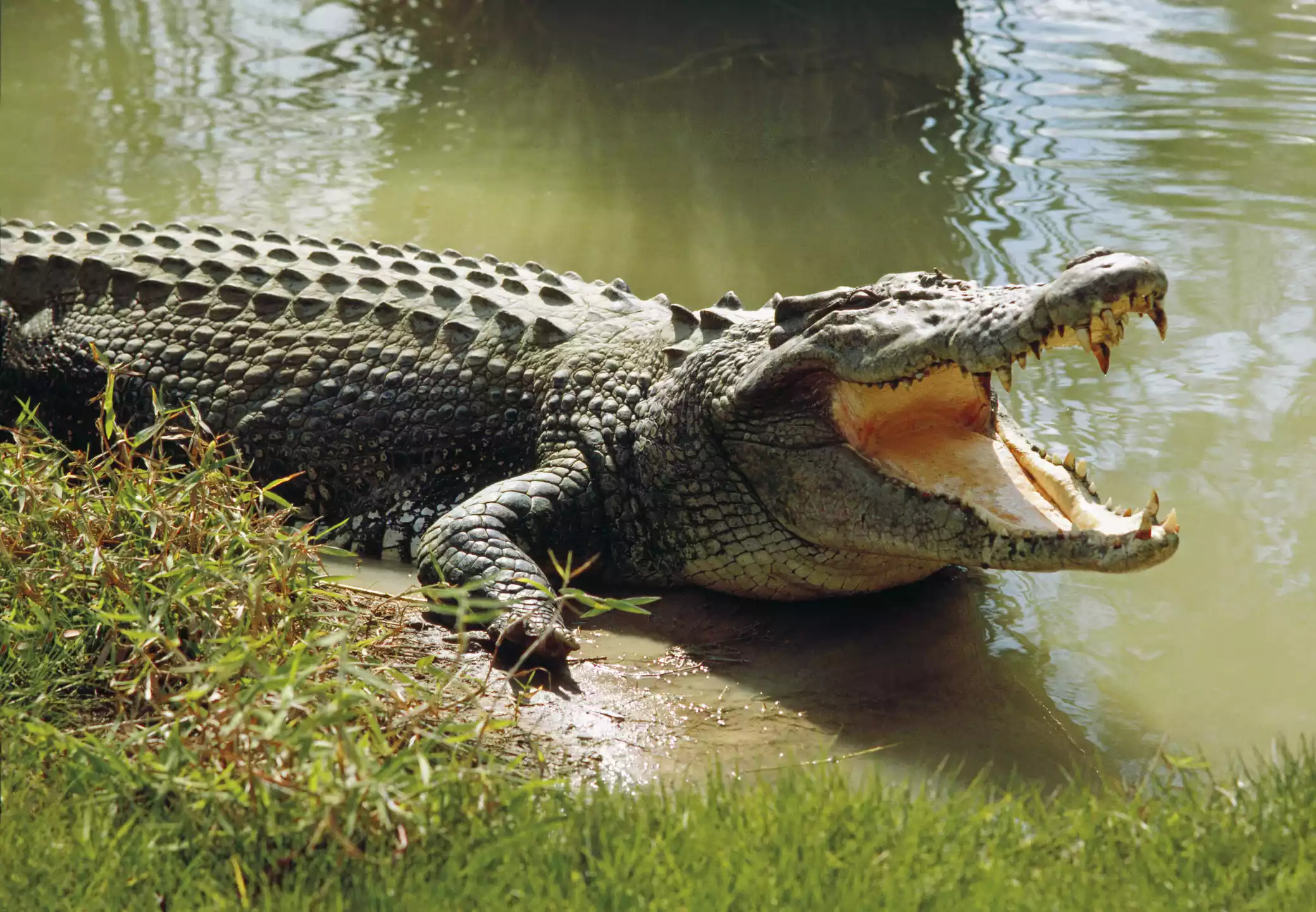
They have a more streamlined body than alligators and a more aggressive nature. Crocodiles can be found in tropical areas in Africa, Asia, the Americas as well as Australia.
These reptiles are well-adapted for life in water; their eyes and nostrils are located on top of their heads, allowing them to see and breathe while mostly submerged. Crocodiles are carnivorous and feed on a variety of prey, including fish, birds, mammals, and occasionally smaller crocodiles.
Crocodiles have a unique feature called a nictitating membrane, which is a transparent eyelid that protects their eyes underwater. They also possess powerful muscles for closing their jaws, making their bite among the strongest in the animal kingdom. Crocodiles are known for their “death roll” – a hunting maneuver where they spin rapidly to disorient or dismantle their prey.
Crocodiles play a vital role in their ecosystem as apex predators and are often considered keystone species in their habitats. Despite their fearsome reputation, crocodile populations in many regions are threatened by habitat destruction, poaching, and conflict with humans.
Comparison table of Alligator and Crocodile
Here’s a comparison table highlighting the key differences between alligators and crocodiles:
| Feature | Alligator | Crocodile |
|---|---|---|
| Snout Shape | Broad and U-shaped | Narrow and V-shaped |
| Location | United States (Florida, Louisiana) and China | Africa, Asia, Americas, Australia |
| Behavior | Less aggressive, more wary of humans | More aggressive, may consider humans as prey |
| Salt Glands | Less efficient, prefers freshwater | More efficient, can tolerate saltwater |
| Color | Darker, usually black or dark gray | Lighter, often olive green or brown |
| Teeth | Lower teeth fit into sockets in the upper jaw, not visible when the mouth is closed | Lower teeth are visible when the mouth is closed, especially the fourth tooth on the lower jaw |
| Jaw Line | Straighter | More V-shaped |
| Size | Generally smaller than crocodiles | Larger on average |
This table provides a quick reference for some of the most notable differences between alligators and crocodiles.
Physical Characteristics
The physical characteristics of alligators and crocodiles, while similar in many respects, also exhibit distinct differences that are key to their identification and understanding of their adaptability to different environments:
Alligators
- Snout Shape: Broad and U-shaped, more rounded, suited for crushing prey.
- Size: Adult American alligators can grow up to about 11 to 15 feet in length. Chinese alligators are smaller, typically around 5 feet.
- Color: Usually darker, often nearly black or dark gray, which helps in camouflage in murky waters.
- Teeth: When their mouths are closed, the teeth fit into sockets in their upper jaw, and the larger teeth of the lower jaw close into these sockets, making them not visible.
- Skin and Scales: Have heavy, armored skin with bony plates called osteoderms for protection.
Crocodiles
- Snout Shape: Narrower and V-shaped, pointed, adapted for catching fish and other swift prey.
- Size: Generally larger than alligators. Species like the Saltwater crocodile can reach lengths of over 20 feet.
- Color: Often lighter, with shades of olive green or brown, which aids in camouflage in riverbanks or muddy shores.
- Teeth: The fourth tooth on the lower jaw of a crocodile sticks out when the mouth is closed.
- Skin and Scales: Similar armored skin but often in a different color palette and with slightly different scale patterns.
Common Characteristics
- Eyes and Nostrils: Positioned on top of their heads, allowing them to see and breathe while mostly submerged.
- Jaws and Teeth: Powerful jaws with numerous conical teeth designed to grasp and hold prey.
- Limbs and Tail: Short limbs with webbed toes, and a long, muscular tail used for swimming.
- Ectothermic Metabolism: Cold-blooded, relying on external sources of heat to regulate body temperature.
These physical traits have evolved to suit their respective lifestyles, with alligators generally adapting to freshwater environments and crocodiles being capable of living in both freshwater and saltwater habitats.
Habitats and Distribution
Alligators
- Habitats: Alligators primarily inhabit freshwater environments. They are commonly found in swamps, marshes, rivers, lakes, and occasionally in smaller bodies of water like ponds and drainage canals. Alligators prefer calm, slow-moving waters and often create “gator holes” that provide habitat for other wildlife.
- Distribution:
- American Alligator (Alligator mississippiensis): Native to the southeastern United States, with a range extending from North Carolina to Texas, and as far north as Oklahoma and Arkansas. They are most populous in Louisiana and Florida.
- Chinese Alligator (Alligator sinensis): Found in the Yangtze River basin in Eastern China. This species is much rarer and is currently listed as critically endangered.
Crocodiles
- Habitats: Crocodiles are more versatile in their habitat preferences and can live in both freshwater and saltwater environments. They are found in rivers, lakes, wetlands, coastal estuaries, and mangrove swamps. Some species, like the saltwater crocodile, are even found in open seas.
- Distribution: Crocodiles have a broad global distribution compared to alligators:
- Africa: Species like the Nile crocodile are widespread throughout Sub-Saharan Africa and in the Nile Basin.
- Asia: Including countries like India, Southeast Asia, and Northern Australia (Saltwater and Mugger crocodiles).
- Americas: The American crocodile is found in parts of South Florida, the Caribbean, Central America, and northern South America.
- Australia and Oceania: The saltwater crocodile is the dominant species, with a range extending from Eastern India to Northern Australia and the Solomon Islands.
Diet and Hunting Methods
Diet
Alligators
- Diet: Alligators are opportunistic feeders. Their diet mainly consists of fish, turtles, various mammals (like rodents), birds, and other reptiles. Juvenile alligators tend to eat smaller prey like insects, amphibians, and small fish.
- Feeding Habits: Alligators modify their diet based on what is available in their habitat and their size. Larger alligators can take down larger prey, including deer and wild boars, especially in areas where such mammals come to drink.
Crocodiles
- Diet: Crocodiles have a similar opportunistic feeding strategy. They consume fish, birds, mammals (including larger prey like antelopes, buffalo, and young hippos), and occasionally other reptiles.
- Feeding Habits: Saltwater crocodiles are known to hunt sharks and sea turtles in coastal waters. Crocodiles are also known for their ability to take down large prey and are more likely than alligators to attack humans.
Hunting Methods
Alligators
- Ambush Predators: Alligators often use a sit-and-wait tactic, lurking just below the water’s surface near the bank and quickly lunging at prey that comes within reach.
- Stealth: They rely on their camouflaged appearance and stealthy movement to approach prey unnoticed.
- Powerful Jaws: Once an alligator has caught its prey, it uses its powerful jaws to crush and hold onto it. They can perform a “death roll” to disorient or tear apart larger or more tenacious prey.
Crocodiles
- Ambush and Stalk: Crocodiles are also ambush predators, but they are known to actively stalk their prey in some cases, especially the larger species like the saltwater crocodile.
- Water and Land Hunting: While they primarily hunt in water, using their powerful tail to propel themselves in a rapid lunge, they can also capture prey on land, though they are less agile.
- Death Roll: Like alligators, crocodiles perform a death roll, a spinning movement used to overpower, dismember, or drown their prey.
Digestion and Feeding Efficiency
Both alligators and crocodiles have slow metabolisms and can survive long periods without food. They have highly acidic stomachs, enabling them to digest bones, feathers, and other tough materials.
This efficiency in digestion and a slow metabolism means they can feed on large prey and sustain themselves for extended periods, an adaptation crucial for their survival as apex predators.
Similarities between Alligator and Crocodile
Alligators and crocodiles, despite their differences, share several similarities owing to their common ancestry and similar ecological roles as apex predators in aquatic ecosystems.
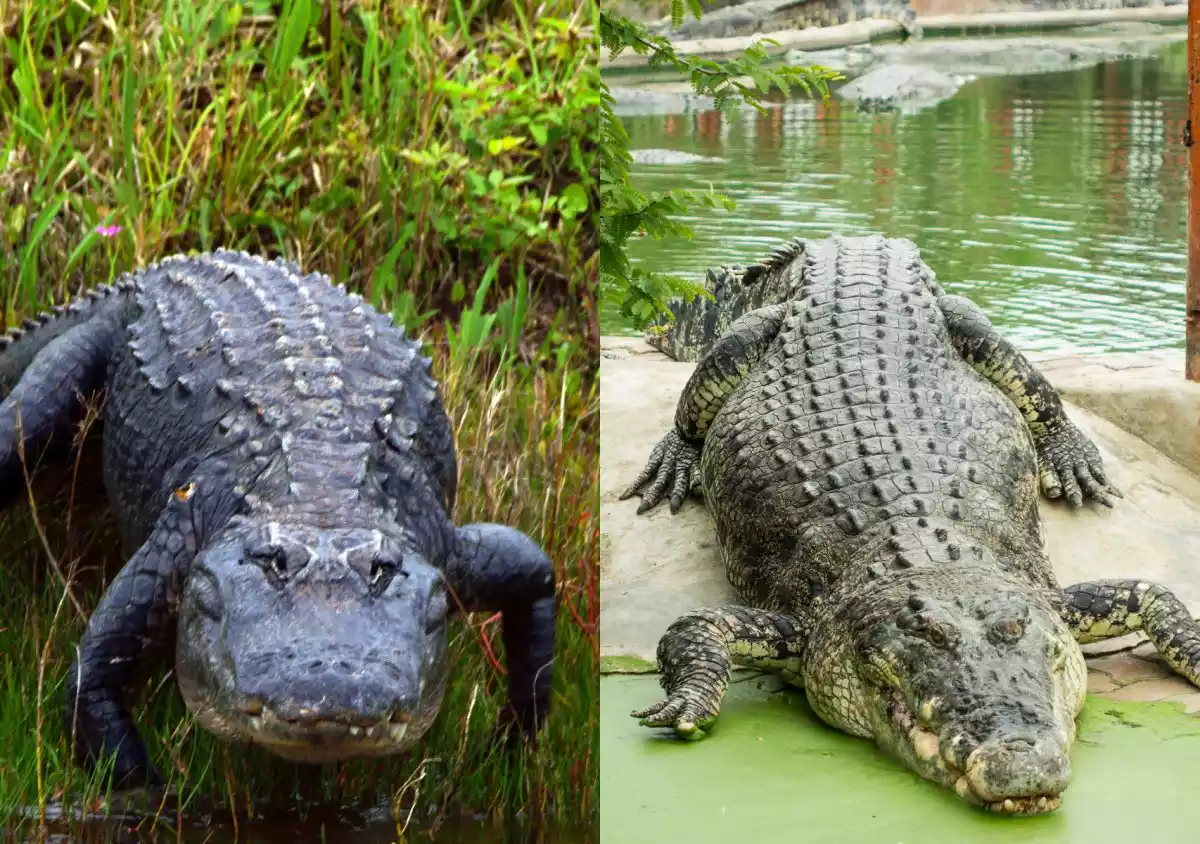
Here are some of the key similarities:
- Physical Appearance: Both have a robust, reptilian body structure with thick, scaly skin, a long, muscular tail, and short, stout legs. Their skin is armored with bony plates known as osteoderms.
- Semi-aquatic Lifestyle: Both are adapted to life in and around water. They are excellent swimmers, using their tails for propulsion, and can stay submerged for significant periods.
- Ectothermic Metabolism: As cold-blooded reptiles, both alligators and crocodiles rely on external sources of heat to regulate their body temperature. They can often be seen basking in the sun to warm up.
- Diet: Both are carnivorous, feeding on a variety of prey including fish, birds, mammals, and other reptiles. They are predators that can be opportunistic and will eat everything they can.
- Hunting Strategy: Both are ambush predators, often waiting motionless for prey to come close before launching a swift and powerful attack.
- Reproduction: Both alligators and crocodiles lay eggs. They build nests and exhibit parental care, with females guarding their nests and helping the young reach water after hatching.
- Longevity: Both species can live for many decades. It’s not uncommon for alligators and crocodiles to live up to 50 years or more in the wild.
- Sensory Adaptations: They have keen senses, including good night vision, sensitive vibration receptors along their jaws, and a powerful sense of smell.
- Communication: Both alligators and crocodiles use a variety of sounds to communicate, especially during mating season.
- Global Impact and Cultural Significance: Both have played significant roles in their respective ecosystems for millions of years and hold a place in human culture and mythology in the regions where they are found.
These similarities reflect their shared evolutionary history and successful adaptation to their respective aquatic environments.
Summary
Alligators and crocodiles, despite their differences in snout shape, habitat preference, and geographic distribution, share many similarities as apex predators in aquatic ecosystems.
Both possess remarkable physical adaptations for semi-aquatic life, display opportunistic feeding behaviors, and play crucial roles in maintaining ecological balance. Their ancient lineage, dating back to the time of dinosaurs, adds to their fascination and importance in the natural world.

